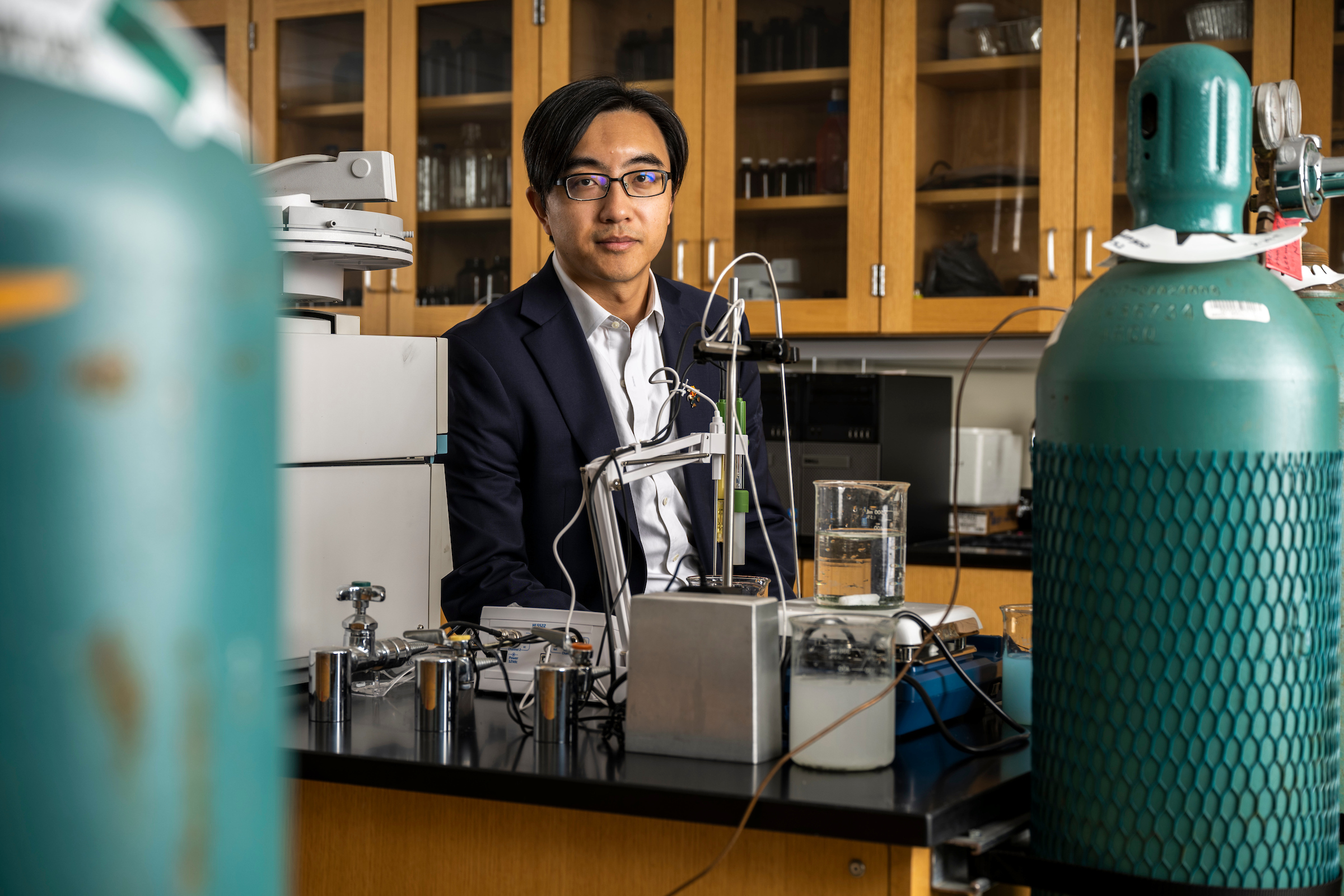As climate change accelerates, scientists are investigating ways to lower carbon dioxide in the atmosphere. At Missouri University of Science and Technology, researchers are developing solutions by turning CO2 into rock, including massive rocks for permanent carbon storage, and concrete, the manmade rock that supports modern civilization.
“CO2 concentration in our atmosphere is now 420 parts per million, the highest in human history,” says Dr. Hongyan Ma, an associate professor of civil engineering at Missouri S&T. “We need ways to not only reduce CO2 emission but also to remove CO2 from the air and utilize or permanently store the removed CO2 at a scale large enough to combat climate change.”
Ma and a team of researchers in materials science and engineering, chemical engineering, mining, economics, and other disciplines at Missouri S&T are forcing CO2 to react with silicate rocks and industrial wastes generated from power plants, cement plants, concrete recycling facilities, and steel mills to form carbonate minerals. Such reactions happen in nature over millions of years to create natural limestone and dolomite formations that stores trillions of tons of carbon, but they are too slow to address the climate change challenge.
Ma and his team use innovative technologies to speed up the process. Their manmade rocks are intended for gigaton-scale permanent carbon storage or production of carbon-negative cement materials for making concrete. Traditional cement production emits a metric ton of CO2 for every metric ton of cement produced, and Ma says the innovations will potentially reduce over 2 billion metric tons of CO2 every year.
Ma’s CO2 conversion and utilization work has garnered more than $2 million in grants for Missouri S&T from the National Science Foundation and other organizations such as the Environmental Research & Education Foundation and the Association for Iron & Steel Technology. These research projects focus on processing various solid wastes using captured CO2 or CO2-rich flue gases to make carbon-negative cement materials and manmade rock for permanent carbon storage. Ma is seeking follow-up grant funding and investment to scale up these innovations and accelerate commercialization.
